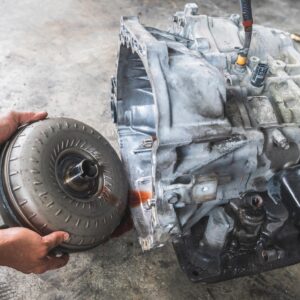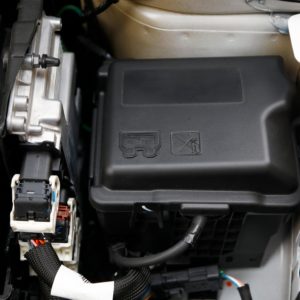DIY repairs can certainly be rewarding, but they can also be very time-consuming. Thankfully, you can find plenty of automotive tools on the market that can help you get the job done correctly and efficiently. One example of this is a torque stick.
What Is a Torque Stick?
In simple terms, a torque stick is an extension that attaches to your impact wrench. It helps tighten nuts and bolts for you, making it an efficient tool to have in your garage. They are also referred to as torque extensions.
How Do Torque Sticks Work?
Similar to torque bars, torque extensions work by flexing when the preset limit is reached. You attach it to the end of your impact wrench, which prevents it from overtightening the bolt.
Always use a torque stick calibrated for the torque you need. For example, for an 80 lb lug nut, you have to use an 80 lb torque stick.
Advantages of Using Torque Sticks
Torque sticks aren’t for everybody, but that doesn’t mean they don’t come with their fair share of advantages. Consider some of the benefits of using torque sticks:
Can Help Prevent Overtightening
Getting the right torque is essential when you’re rotating or mounting your tires. Too much torque can stretch bolts beyond their limits, causing the bolts to crack and the wheel to fall off. Using a high-quality torque stick set can help prevent all this. Just make sure to verify the torque settings by using an impact torque wrench as a safety precaution.
Consistent
Torque extensions provide consistent torque application that ensures fasteners are tightened to the same specification. Not having consistency can be dangerous, as bolts can vibrate loose and come out.
Convenient
Torque sticks are more convenient than wrenches since they’re easier to use. Mechanics can also identify the correct stick using the color-coded chart/set. Having the right torque set means you don’t have to switch tools during a task.
Safe
As mentioned, torque sticks prevent over-tightening and provide consistency, helping maintain the integrity and safety of assemblies.
Great for Motorsports
If you’re into motorsports, then you know just how useful a torque stick can be. Every second counts in a race, and using torque sticks during pit stops can save you a lot of time.
Plenty of Options on the Market
Torque sticks are typically sold in sets, but you can also buy them by piece. You’ll find a lot of options on the market at varying price ranges, so you’re sure to find one that suits your budget.

Disadvantages of Using Torque Sticks
While some might find torque sticks especially useful, some believe their disadvantages outweigh the benefits. Consider these examples:
Can Take Longer To Use
Contrary to popular belief, impact torque sticks do not make the job faster. They go on the impact, you tighten the lug nut down, and they prevent over-torquing. However, you still have to get a torque wrench and confirm the proper torque. Because of this, they take longer to use unless you don’t check the torque with a torque wrench.
Not Always Accurate
Ask your fellow gearheads, and you’ll find they have mixed opinions about torque sticks. Some swear by them, while others don’t trust their accuracy. Most professionals use an impact stick and then double-check the torque with a torque wrench. They recommend using a torque wrench after using torque sticks just to make sure you don’t end up overtightening any nuts or bolts. Unfortunately, some think this defeats the purpose of torque sticks, but it’s always better to be safe than sorry.
Can Lose Torque Values Over Time
Like torque wrenches, torque sticks can lose their torque values over time. Some recommend replacing them after six months of frequent use, but the lifetime of torque sticks can vary depending on different factors like their brand. There are plenty of torque sticks on the market, but not all of them are of good quality.
How To Use Torque Sticks
If you’ve decided to take the plunge and buy yourself a set of torque sticks, then you’d better be prepared to use them. Here are some helpful tips on how to use torque sticks:
Use a Torque Stick With 20% Lower Torque
As much as possible, use a torque stick that’s around 20% lower than the final wheel torque of your vehicle. That way, you can avoid over-torquing your nuts and damaging your wheel.
You can find your vehicle’s wheel torque and other important information in the owner’s manual.
Use Only a Quick Tap
After attaching the correct torque stick to your air impact wrench, use only a quick tap to tighten each wheel nut. Hammering or applying too much force with the wrench can over-torque and damage your wheel nuts.
Torque the Wheel Nuts in a Star Pattern
When tightening wheel nuts, always follow a star pattern. Doing so eliminates vibration and ensures that all wheel nuts are evenly torqued.
You can start with any wheel nut, but make sure to tighten the one directly opposite it afterward. Then, tighten the loose nut on the other side, and keep going until eventually all the wheel nuts are tightened.
Always Finish With a Torque Wrench
Remember how we asked you to use a torque stick with approximately 20% lower torque than your vehicle’s actual wheel torque? This is why. High-quality torque sticks can be accurate, but it never hurts to be more careful.
Take your torque wrench and set it to the proper wheel torque. Following a star pattern, go ahead and hand torque each wheel nut. A clicking sound is your cue to stop as this is a sound wheel nuts make when they’re properly tightened.
Any information provided on this Website is for informational purposes only and is not intended to replace consultation with a professional mechanic. The accuracy and timeliness of the information may change from the time of publication.
































